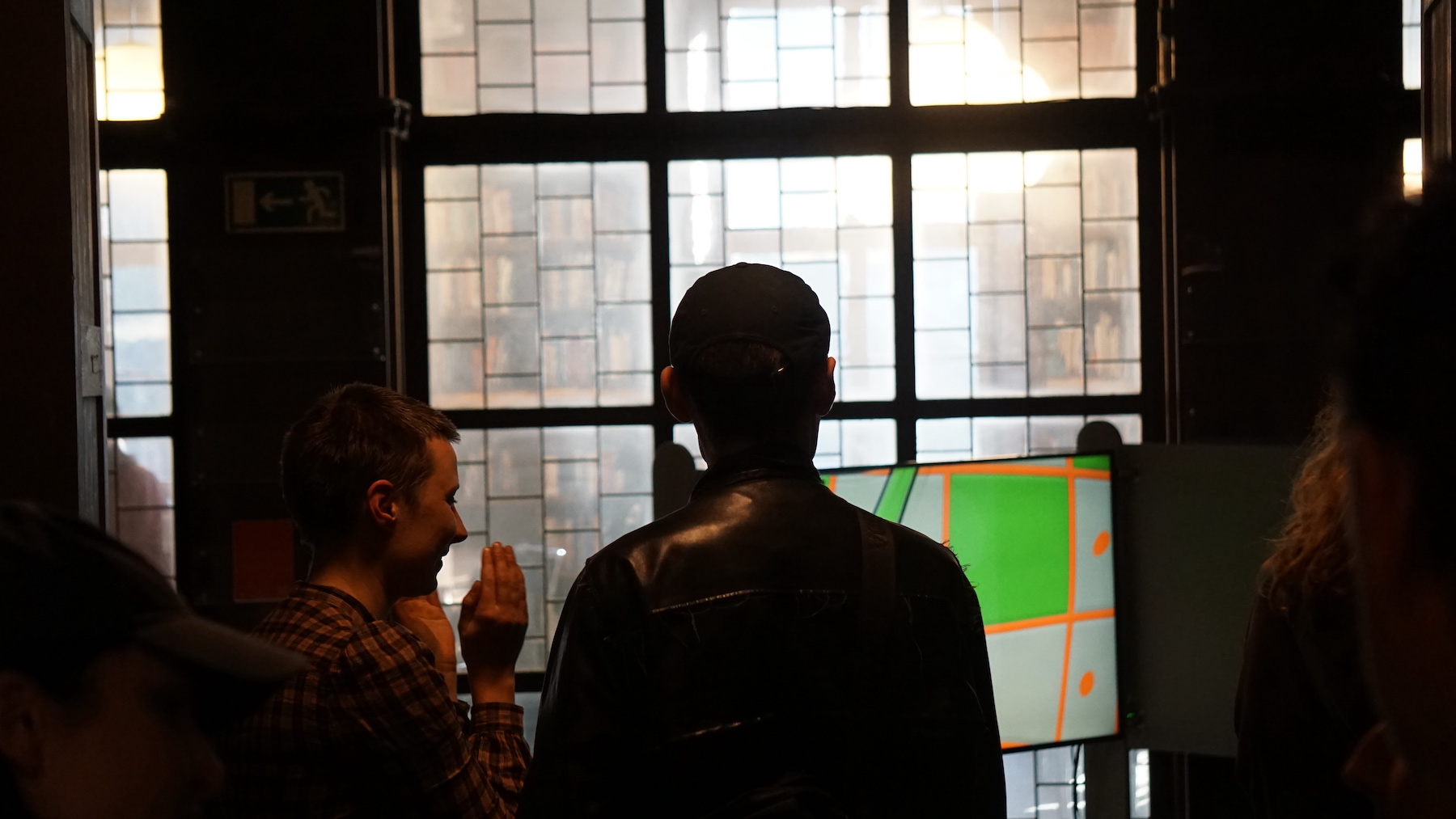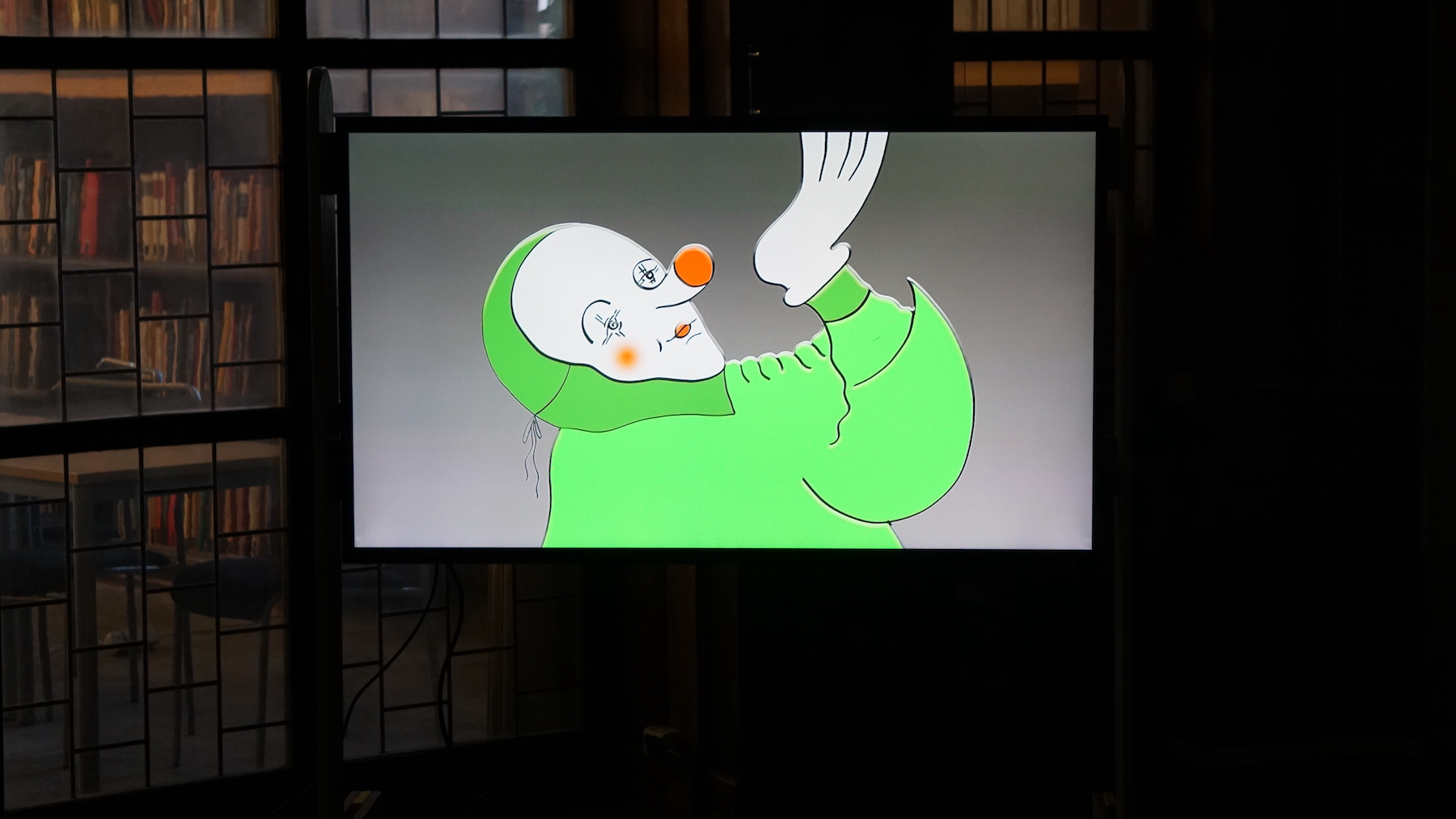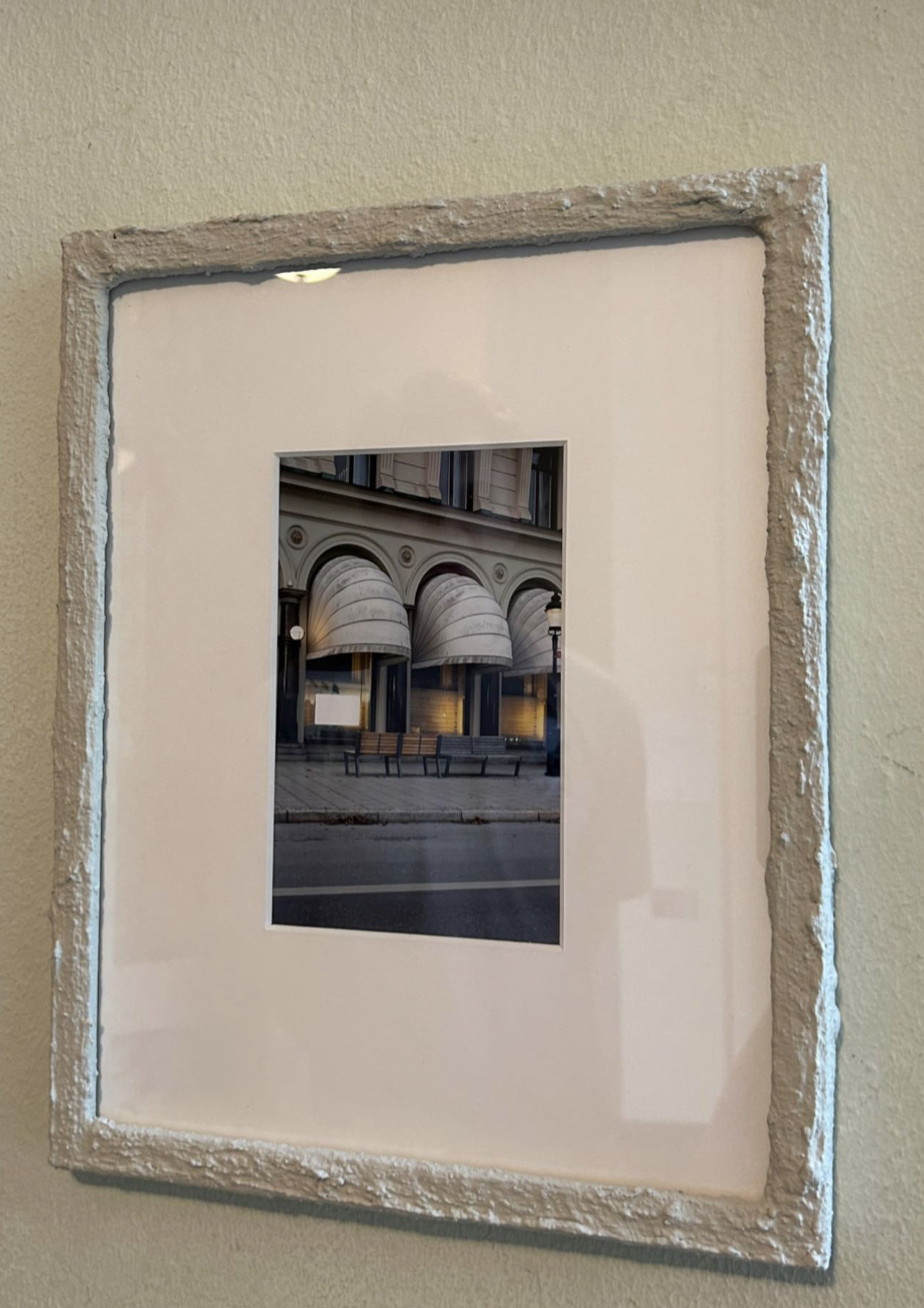Astrid Braide Eriksson

Astrid Braide Eriksson (b. 1993, Göteborg) is a visual artist living and working in Stockholm. She holds an MFA from the Royal Institute of Art, Stockholm and Akademien der Bildenden Künste, Vienna. Through drawing, moving image and sculpture Braide Eriksson investigates language as a bearer of ideology and the affective consequences of the economic system.

The tongue is a little member, but boast of great things (an educational setting) 2022/2023
Installation with digital animation, 11:55 min
2 channel video, 2 channel sound, TV cupboards, chess chairs, curtain
Text from the Dialogue of the exchequer, ca 1180, visuals based on etching of the Exchequer of Ireland, ca 1490. Voices by Kenneth Constance, Saleen Gomani and Valeriia Weinrub
The Dialogue of the Exchequer was written approximately in 1180, a time when one homogenous currency had recently been introduced in England. In it, a master explains to his disciple how the economic system works by describing the tax court of the king.
The scene of the exchequer is set around a chequered table. Hands move objects over the surface, touching. Officials are placed around the table, each one with a task, a position in the scene. An etching from ca. 1490 of this system serves as the model for the animation The tongue is a little member, but boast of great things. The Dialogue of the Exchequer is used as the script, reworked and chopped up.

Huvudets baksida / the back of the head & A bent knee waiting for a sitter
31x39 cm
Photographs in frames of wall plaster and pine
At the corner outside Handelsbanken’s headquarters, the sidewalk is broader than usual. It creates a square-like space, where public benches are installed facing the sightseeing boats leaving for the archipelago. Television screens are installed in the bank’s windows, silently projecting their light out on the pavement. With their backs to the display windows in Handelsbanken’s facade, the benches are crouched down, like a bent knee waiting for a sitter.